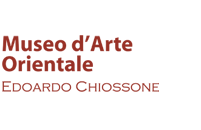The twelve suits of armour exhibited in the Fifth Gallery represent the main types of Japanese armour from the 16th to the 19th century. Complete, equipped with weapons and mounted on articulated wooden mannequins (specially made in Japan at the end of the 19th century) they constitute a unique feature of the Chiossone Museum.
The rise of the warrior class during the Heian period (794-1185) led to the birth of the Yoroi armour, suitable for mounted archers, and the haramaki, a light armour with rear opening used by infantrymen. The Yoroi armour represents an exclusively Japanese style: it is equipped with shoulder straps (sode), protective plates for the shoulders and is completed by a helmet with bossed reinforcement called hoshikabuto, "star helmet". Since this armour is of considerable size and its accessories guarantee excellent protection, it is commonly called ōyoroi, "large armour".
During the period of the country at war (sengoku jidai, 1468-1568) due to the spread of weapons designed to pierce and firearms, a simpler type of armour, made of two large iron plates or strips riveted in iron gained popularity. Therefore, the modern equipment called tōseigusoku spread, consisting of armour with protection for the arms, thighs and legs, as well as a very showy helmet called kawari kabuto.
In the Edo Period (1600-1868) the armour became distinctly ornamental with extremely elaborate accessories and gradually lost all practical function. Later, in the Meiji Period (1868-1912), the classic ōyoroi-style armour was reproduced in deference to a revival in taste for the antique.




